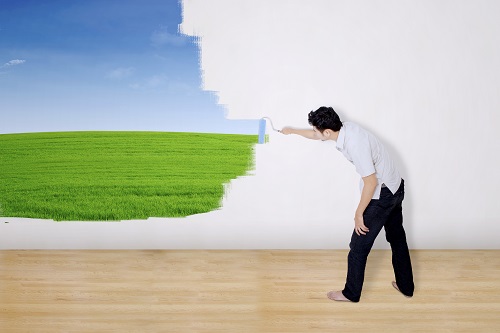Using the Work Environment to Promote Productivity
Share with friends:
The space around you affects your energy, attitude, and the way you work whether you realize it or not. In your workspace, you can be sure almost everything is going to play into how you do your job. Sometimes it involves small things like bringing in snacks or coffee, but on a larger scale, companies utilize the work environment itself to benefit their employees and their overall productivity.
You may notice some of these elements in your own company: large windows or chairs with what seems like endless knobs and levers meant to adjust the slightest bit of your seated posture. And there are even subtler measures, such as sound masking, that, unbeknownst to you, improve your concentration and productivity. In this post, we’ll talk about ways to the work environment can affect productivity, and maybe provide inspiration for changes within your office.
Temperature
Studies have given conflicting answers regarding the “perfect” temperature for productivity, with researchers in Helsinki, Finland, declaring temperatures as low as 68 degrees Fahrenheit being optimal. On the other hand, researchers at Cornell University say that workers are most accurate and efficient at 77 degrees Fahrenheit. But they do agree that when environmental temperatures are too low for the body to easily maintain equilibrium, the rate of productivity drops and the rate of mistakes rises. This is because the majority of your energy is going towards keeping warm and not towards concentrating on the task at hand. One temperature isn’t going to work for everyone, but companies do their best to set thermostats at a temperature that is both economic and productive.
Lighting
It is generally agreed that artificial lighting is inferior to natural lighting. Both dim and bright, fluorescent lighting has negative impacts on the productivity and health of employees. Dim lighting contributes to drowsiness and fluorescent lighting contributes to eye strain and headaches, which makes it difficult for employees to get their jobs done. Therefore, you often see office buildings with large windows to let in as much natural light as possible.
Sound Masking
Not to be mistaken for white noise, sound masking systems pump an ambient background sound through the office to create buffer noise that helps employees focus. These systems aren’t noticeable (and that’s the point!), but their effects are. Studies show work environments that are too noisy can dampen productivity: a barrage of sounds will not only annoy employees, but distract them from getting anything done. Super quiet workspaces, however, are no more productive. Without any buffer sound, sounds and conversations made by employees can travel across workspaces, through walls, and also cause distractions. Sound masking keeps the noise contained so not only can employees focus, but they can also keep confidential discussions confidential.
Ergonomics
Working in comfort is more than ensuring employees work productively, but also includes relieving stress from their bodies and minor muscle groups. According to the Occupational Health and Safety Administration, work-related musculoskeletal disorders account for the majority of work loss. This is critical for anybody doing a job, whether they are doing heavy lifting, working with machinery, or sitting at a desk. For the latter employees, many companies provide ergonomically sound work stations. These may include chairs with which one can adjust the angle of the back rest, the height, the angle of the seat, armrests, and more. Workstations designed for extended sitting may also include adjustable keyboards and computer monitors. The idea is to have employees of any height seated in a comfortable, safe posture.
Color
More and more, companies are foregoing white and beige walls for colors that promote energy and productivity. Studies have shown that white walls can be interpreted as clinical by employees, and can create feelings of sadness or stress. Alternatively, more colorful landscapes will promote creativity and positive energy. Different colors yield different vibes: yellow is an optimistic color ideal for more creative job functions, blue and green help create a soothing atmosphere, and red is a color that attracts attention and boosts energy. Repainting entire walls these colors isn’t the only option. Using them to accent areas of the workspace will yield similar results.
Some of these methods are easier said than done, but all of them do result in higher productivity for anyone in the workspace. It could be as little as adjusting the thermostat, or a grand office makeover with more windows and brighter walls. Either way, every element of the workspace is critical to how employees will perform.


